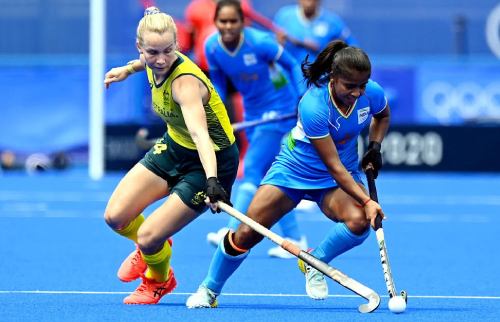
On 1 January 2020, a new model for calculating the FIH World Rankings was introduced, moving away from the previous tournament-based rankings system to a dynamic, match-based model where opposing teams exchange points in official, FIH sanctioned games.The number of points exchanged depends on the result of the match, the relative ranking of the teams and the importance of the match.
It has been one month since the match-based FIH World Rankings system came into play, and during that time we have seen some movement, particularly in relation to the teams competing in the FIH Hockey Pro League. The most notable came at the very top of the men’s standings when second ranked Belgium faced top ranked Australia in two matches in Sydney.
The Red Lions arrived in Australia knowing that they could replace the Kookaburras as the world’s number one ranked team and – thanks to a draw / bonus point win in the opening match followed by an outright victory in the second game – the reigning World and European champions left Australian soil having emphatically achieved their aim.
The impact of the Australia versus Belgium double-header is a good example of how the new match-based system delivers a better reflection of current performance, which was one of the driving factors behind the move away from the old tournament-based model that revealed updated ranking positions only three or four times per year.
Since the start of the 2020 edition of the FIH Hockey Pro League on 11 January, every match played has had increased value due to the potential for rising up or falling down the rankings table. In recent weeks, Belgium’s women have claimed two draws in Australia and a win in New Zealand, impressive results against higher ranked opponents which has resulted in a one place climb from 12thto 11thin the rankings table.
However, it could have been even better for the Red Panthers – two wins over Australia might have seen them rise up to eighth in the rankings, and would have forced the Hockeyroos down two places from second to fourth. While this particular scenario did not play out, it serves as an indicator for how much potential change there could be in the weeks and months ahead, not only in the Pro League but also for all nations competing in FIH approved test matches.
FIH World Rankings: The new model explained
- Based on the Elo rating system, which is used as the basis of many other sports ranking systems
- When two nations play against each other, a number of ranking points are exchanged between them
- In every match, the number of points gained by one team is exactly matched by the number of points lost by the other
- Teams will win more points for beating teams ranked above them, and therefore teams will lose more points for losing to a team ranked below them
- Teams will win less points for beating teams ranked below them, and therefore teams will lose less points for losing to a team ranked above them
- If a draw occurs, the lower ranked team will gain a small number of points and the higher ranked team will lose the same number of points
- The number of points exchanged is dependent on the result of the match (win, lose, shootout win/loss or draw), the importance of the match (part of a major tournament, or a test series for example), and the relative difference in ranking points between the teams before the match
For complete information about the new match-based FIH World Rankings system, pleaseclick here.
To see our frequently asked questions information document,click here.
























